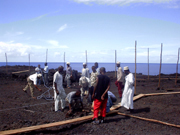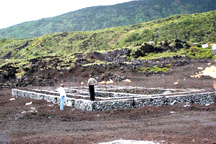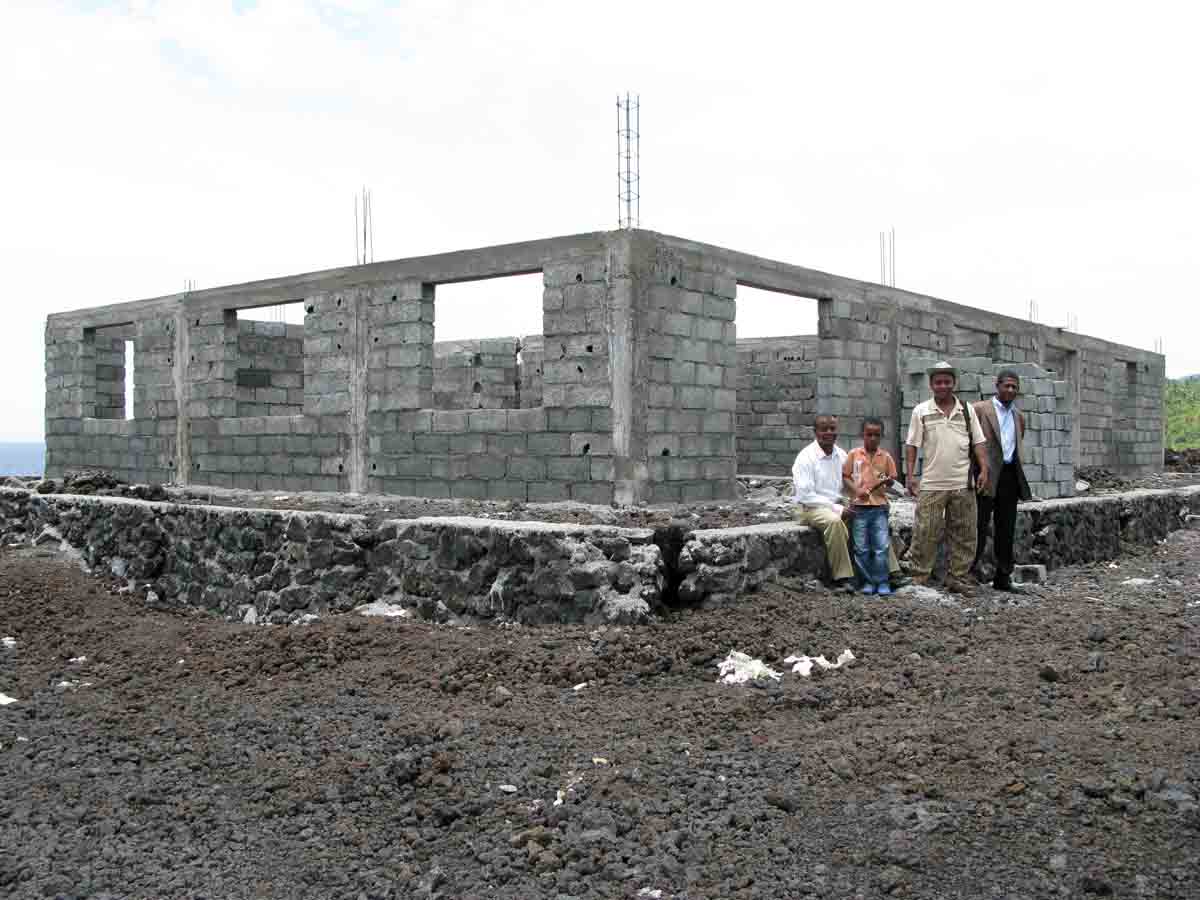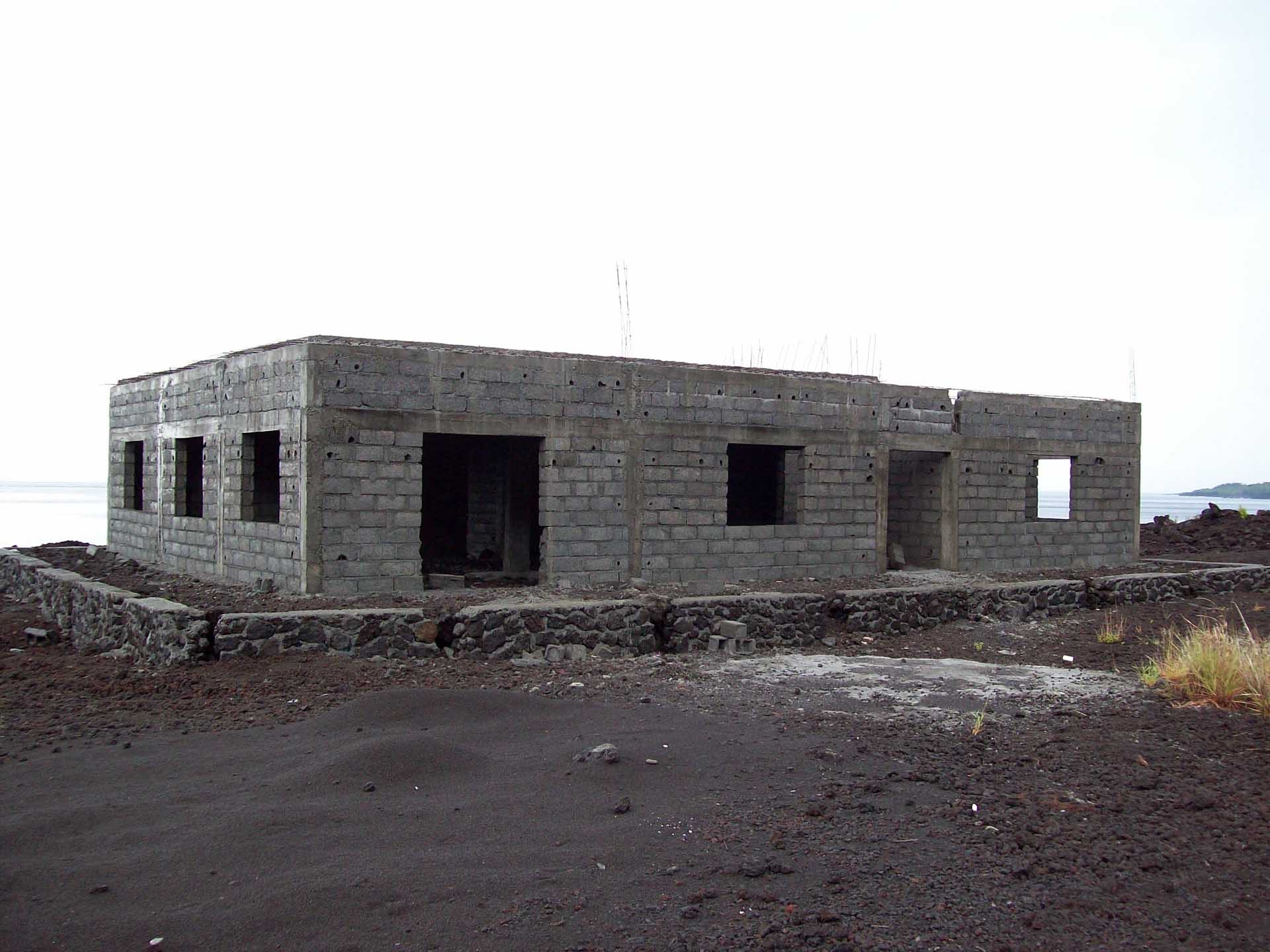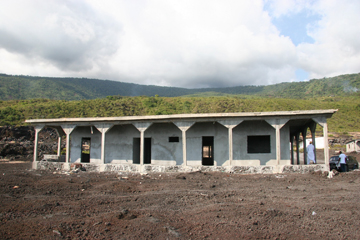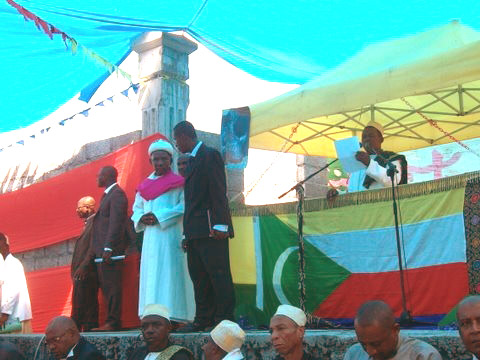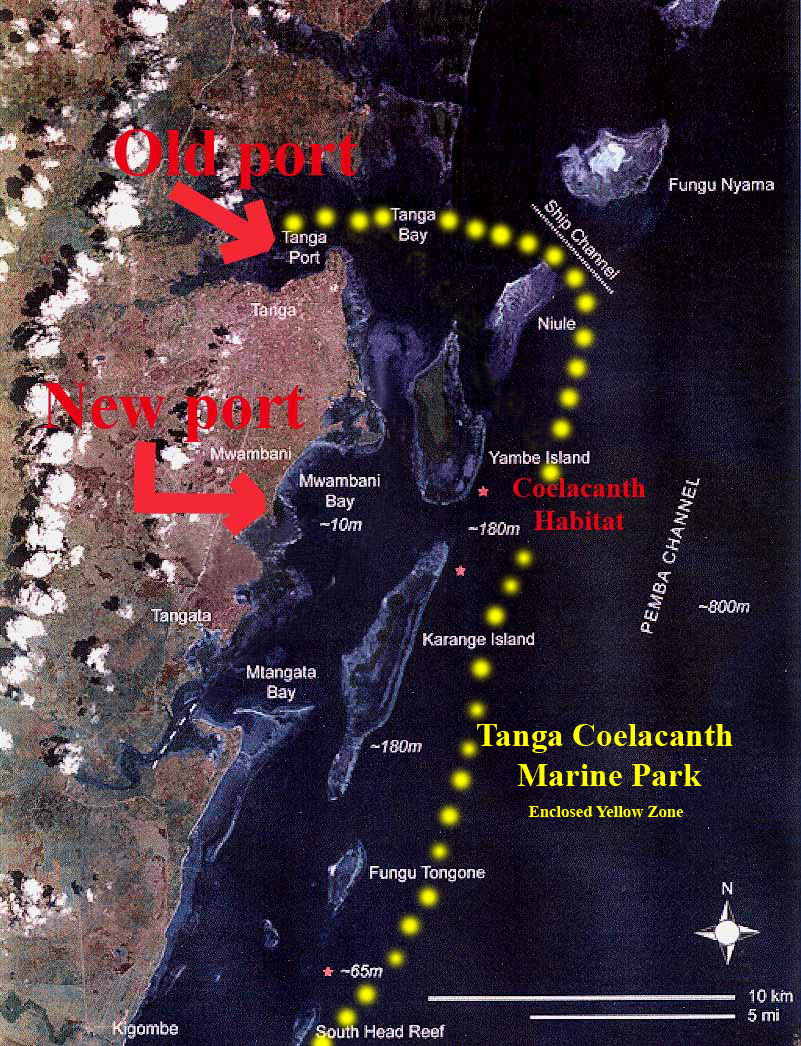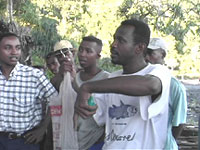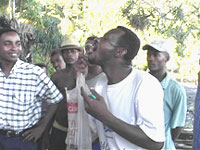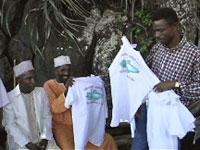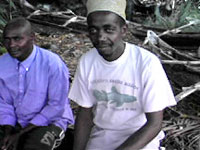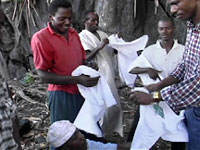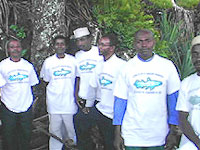Coelacanth News!
Click here for a printable version of this page.
Remembering the hooked, the trawled, and the netted!
New Publication details all recorded Coelacanth Catches!

Years of painstaking research by "coelaphiles" Rik Nulens, Lucy Scott, and Marc Herbin, produce the most accurate account of coelacanth catches ever published. Can't wait for our copy!
Click here for printable abstract page.
Click here for printable order form.
Japanese scientists claim Tanga coelacanths genetically distinct from Comoran cousins
( Nov. 10, 2011 ) Researchers from the Tokyo Institute of Technology and other entities said the newly found breeding group of Tanga coelacanths linked to the site, has existed for more than 200,000 years without genetic contact with other groups.
The team published the results in an online edition of the Proceedings of the National Academy of Sciences of the United States.
Tokyo Institute of Technology Prof. Norihiro Okada and his colleagues analyzed genes of more than 20 coelacanths caught off Tanga, northern Tanzania, and nearby sites. The areas are nearly 1,000 kilometers north-northwest of the Comoros Islands.
The results showed the fish belong to a population genetically distinct from that off Comoros Islands.
The two groups seem to have separated 200,000 to 2 million years ago, the researchers said.
Considering the number of fish caught, the researchers assume the newly discovered population may comprise hundreds of coelacanths near the site.
This finding conflicts with the claims of German scientists that the Sodwana, South African coelacanths are genetically the same as the Comoran species. (See articles linked from the Recent History page of dinofish.com)
Another Coelacanth caught in Indonesia!
Capture Date: 21 July 2011. 17:00h.
Capture Place: Tatapaan, Amurang – Minahasa, Sulawesi Utara, Indonesia.
Fisherman’s name: Oktavianus Cowan Kawalo
Weight: 13.1kg.
Length: 105cm.
Condition on capture: alive, dying 1.5 hrs later on the boat.
Method of preservation: Frozen.
Condition after capture: Good.
First ref. cited: Tribun Manado, 22 July 2011.
Current Holding: South Minahasa Fishery Office
Additional comments: Pictures taken. Descriptive name Indo 6. The fisherman went to the Tumpaan fish market where the specimen was recognized by Jefri Lamia as the protected Latimeria. Then the authorities from DKP (Department of Marine and Fisheries of North Sulawesi province) were informed and Mr. Arifin Kiay Demak came immediately to the Tumpaan fish market and took the coelacanth with him to freeze it.
(Courtesy Rik Nulens)
The Second Dinofish.com Pacific Coelacanth Expedtion
A breif review of our Jan '11-April '11 search for coelacanths in the South Pacific.
On March 11, 2011, Japan's Fukushima Aquarium was damaged by the tsunami following a massive earthquake. Initial reports indicated that the staff was successfully evacuated to the third floor, but when power to the life support systems was cut off, as many as 200,000 resident aquarium fishes died. Some marine mammals were removed to other facilities. The impact of this event on the aquarium's coelacanth search program is presently unknown to dinofish.com, however the aquarium is scheduled to reopen this July 15th.
During the November 2010 expedition, scientists from Fukushima Aquarium in Japan, in cooperation with the Sam Ratulangi University in Manado (Indonesia) were able to locate and film 5 coelacanths (in three dives) in Indonesia. With the ROV they traced these coelacanths close to Biak Island (Papua/Indonesia), about 1800km more East than the previous dive locations around Manado (North-Sulawesi).

Later, three more were observed in the same area. (photo below)
Here are the results from the ROV investigations around Biak.
For the statistics…
11 November between 14:22 and 14:46 at a depth of 210m – 2 Coelacanths
13 November between 16:48 and 17:05 at a depth of 194.93m – 3 Coelacanths
15 November at 14:54 at a depth of 194.91m – 1 Coelacanth
One coelacanth has been seen twice, so in total 5 different ones.
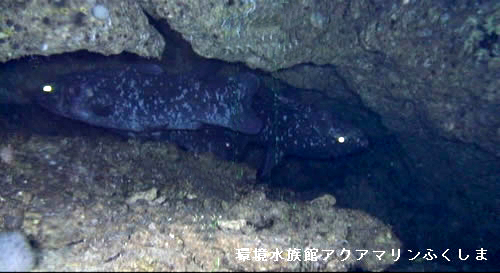
On September 21, 2010 a pregnant female coelacanth was caught North of Karanga Island, about 750 m from Nyuli sand bank, heading east, in Tanzania. The female had about 17-19 pups in her belly and has been preserved.
On 21/22 September 2010 and on 27 November 2010, two coelacanths were found in a shark net in Madagascar, West of Nosy Ve (Anakao) – Toliara in Madagascar. Both specimens are now preserved. Sad news came from Zanzibar a few days ago where the female coelacanth and her 23 pups, caught on 17 July 2009, had to be discarded because they had decomposed, due to problems in the electricity distribution on Zanzibar.
(Courtesy Rik Nulens)
The sixth R.O.V. expedition of Japan's Aquamarine Fukushima, succeeded in locating and filming a juvenile coelacanth on October 6th, 2009. The fish was found in Manado Bay, North Sulawesi, Indonesia. It was measured by a laser beam to be 31.5cm. The expedition leader was Masa Iwata from Fukushima Aquarium. (Courtesy Rik Nulens).
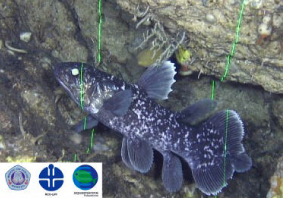
Click here for a video clip of the juvenile!
(courtesy Rik Nulens)
The same expedition that filmed the juvenile made a picture of six coelacanths in one cave. See the full account of the Fukushima expeditions on dnofish.com at Recent History/Fukushima. , and an account of the Indonesian Coelacanths at Recent History/Indonesian Coelacanths.
One small step for a fish! The Coelacanth Rescue Mission (CRM), funded by contributors to this web site via Coelashop purchases, initiated financing for a coelacanth research center (CoelaCenter) at Itsoundzou, a fishing village on Grand Comoro island in the Indian Ocean. The center is within several hundred feet of where the largest and most studied colony of coelacanths reside by day in their submarine caves. It is being built and will be operated by APG, a local group supporting coelacanth conservation. The center will be used to increase conservation awareness locally, and conduct ecological research. It will also be a museum dedicated to the history of the coelacanth. Groundbreaking began in April '04. By winter '08, thanks entirely to "coelashoppers" walls were completed for the first floor. In Feb. '08, the Comoros office of the United Nations Development Project (UNDP) Global Environment Facility/ Small Grants Programme, agreed to finance the next phase of the Center's completion, an exciting giant leap for the center and the people of Itsoundzou.. (Pictures courtesy Said Ahamada, Mahmoud Aboud and Jerome Hamlin) Further contributions welcome- see Coelashop.
200 T Shirts 2004
500 T Shirts! 2005
1,500 T Shirts! 2006
2000 T shirts! 2007
2,500 T shirts! 2008
2,500 T shirts + GEF/SGP! 2009
The Comorian Vice President speaks at the regional opening of the Coelacanth Center, March 26, 2011
| ||||||||||||
New port Project and Dynamite Fishing Threaten Coelacanth habitat in Tanzania A new deep-sea port planned to be built in Mwambani Bay, just 8km south of the original old Tanga Port, would include submarine blasting and channel dredging, destroying known coelacanth habitat in the vicinity of Yambe and Karange islands - the site of several of the Tanzanian coelacanth catches. In the meantime, the very same area has been gazetted as the Tanga Coelacanth Marine Park. Tensions are brewing as local residents in the area are already being evicted from their lands and livelihoods by the harbor project, though not even a single Environmental Impact Assessment has been done. The new port will be put down right in the middle of the Coelacanth Marine Park! For more info: www.tnrf.org/Mwambani
At the same time, a tradition of dynamite fishing by locals in the area is trashing the reefs where coelacanths and other marine creatures live. (See below: reefs are pink, dynamite fishing area red.) Come on folks! This is embarrassing!
Map detail: World Resources Institute
| ||||||||||||
| Project Splashback: Deep Release Kit II's Distributed in the Comoros
|
||||||||||||
Thanks also to Dinofish.com contributors (see Coelashop Hall of Fame elsewhere on this site) Deep Release Kits of the Type II variety were distributed to fishermen in the Comoros through Said Ahamada and the Society for the Preservation of Gombessa on the island of Grand Comoro. In November, 2000, the devices were introduced for the first time on the Comoran island of Anjouan, where coelacanths are also caught and virtually no conservation program existed. The DRK II is a plastic bag attached to a barb less hook packaged in a pocket able plastic change purse. When sinker stones are placed in the bag and the hook on the Coelacanth's lower jaw, an accidentally caught Coelacanth can be lowered back into the cold water on the ocean floor without further stress. The DRK II is easier to produce and is more durable than the DRK I which previously was sewn to the back of a T-Shirt. Both were invented by Jerome Hamlin based on the deep release concept submitted to dinofish.com by Ray Waldner. Presently more kits are being sent to the Gombessa Association in the Comoros. (Gombessa is the local name for coelacanth.) Meanwhile, Said Ahamada, our contact in the Comoros, has received matching support from the United Nations Development Project (UNDP) in the form of 100 lamps to encourage shallow level fishing, and a motorized patrol boat. In 2008, Deep Release Kits were also made available in Tanga, Tanzania, where more coelacanths are now being caught than in the Comoros. |
||||||||||||
|
||||||||||||
|
||||||||||||
More CRM T-Shirts were donated to Comoran fishermen throughout the year 2000 and into 2001/2002. T-Shirts are very popular in the "fashion conscious" Comoros. They are often worn to shreds and must be replaced from time to time. |
||||||||||||
|
||||||||||||
